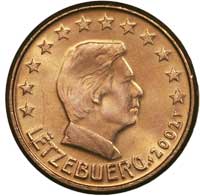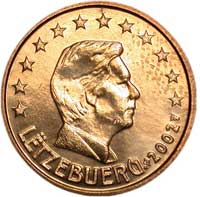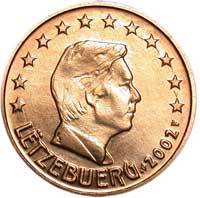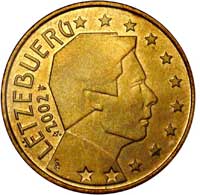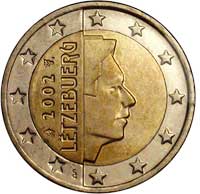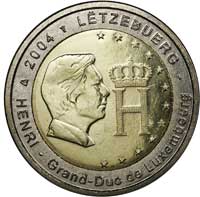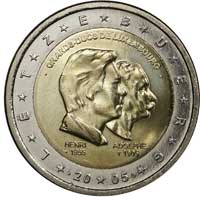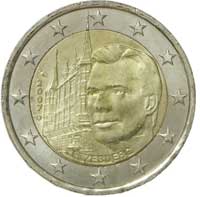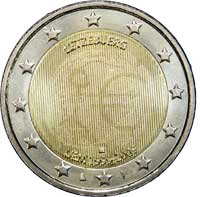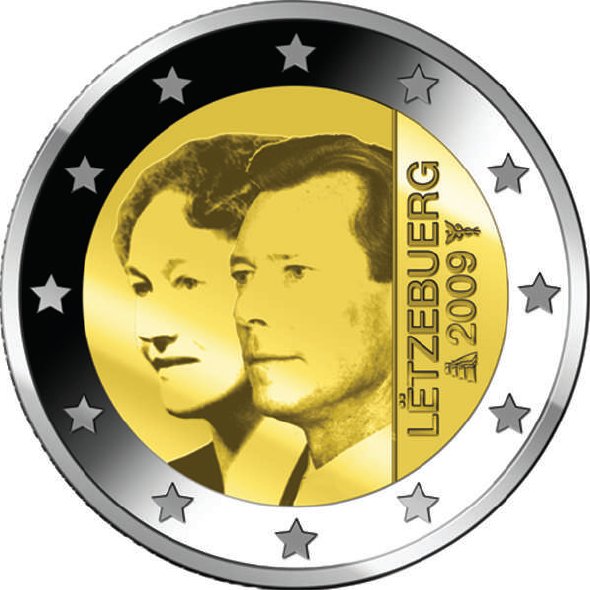| |||||||||||||||||||||
General data
Le Luxembourg rentra dans l’orbite du Saint Empire Germanique, puis dans celui des Habsbourg en 1482. Brièvement annexé par Louis XIV, le duché retourne aux Habsbourg dans les Pays-Bas autrichiens. De 1795 à 1815, le Luxembourg reconquis par la France devient le département des Forêts de la République et de l’Empire. En 1815, Guillaume 1er des Pays-Bas en devient souverain, jusqu’à ce que la jeune Belgique en prenne le contrôle de 1830 à 1839. Retour donc aux Pays-Bas, cause de terribles difficultés économiques – avec une très importante émigration vers les Etats-Unis. Guillaume III, roi des Pays-Bas, renonce à la couronne grand-ducale et la donne à son cousin Adolphe en 1890. Occupé par l’Allemagne durant la première guerre mondiale, le Luxembourg voit son indépendance et sa neutralité reconnues par le Traité de Versailles. Cependant, la grande-duchesse Adélaïde, voulant établir une monarchie autoritaire, doit abdiquer en 1919 en faveur de sa sœur Charlotte. C’est celle-ci qui devra affronter la tempête de la seconde guerre mondiale, exilée de son pays, elle gagnera par son attitude inébranlable une extraordinaire popularité lors de son retour. Elle abdiquera en 1964 en faveur de son fils Jean, qui règnera 36 ans – avant sa propre abdication en 2000, sur un pays devenu le plus prospère d’Europe. Le Luxembourg a été un acteur majeur de toutes les étapes de la construction européenne, depuis le BENELUX, le Traité de Rome, …
La langue officielle est le français, mais le parler local est un dialecte « francique-mosellan » germanique. Luxembourg and the Euro At the time of the definition of the “criteria of Maastricht” only two countries in Europe fulfilled them: Luxembourg, and…. Cyprus.
The Luxembourg law stipulates that the reigning grand-duke must be reproduced on the circulating coins. It is thus very natural that one finds the effigy of the Grand-Duke Henri on the current series. They are on the model of the Dutch coins, the only notable difference being the inversion of the side views with the Queen Beatrix, and the size of the chest on the yellow coins. The engravings carried out for the portrait of the Grand-Duke are signed with the monogram of the artist Yvette Gastauer-Claire. One finds them on the top part of the collar on the 1, 2 and 5 cents, lower part of the collar for the 10, 20 and 50 cents, in the crown for the 1 and 2 euro. The quality of striking is either that of the Netherlands, or that of Finland or that of France. The name of the country appears in the Luxembourger form: LËTZEBUERG. With regard to the non-circulating commemorative coins, they are struck as well by the Polish, Austrian or by one of the German workshops. It should be noticed that the Central Bank of Luxembourg (CBL) has a quality in the communication towards the public of which many “important” minting institutes should be inspired. A trouble however: the CBL does not any more openly distribute the circulation coins and one needs to pay a fee of €6 per roll of coins one wants to buy! If the purchase of a roll of €2 coins does nothing more than to increase the cost (of the facial value) of 12%, the purchase of a roll of 1 cent coins multiplies it by 13!
The €2 commemorative coins Luxembourg issued an annual commemorative coin since 2004, but the choice in the patterns is very limited being given the mandatory presence of the Grand-Duke. The 2007 commemorative coin “Grand Ducal Palace" presents this characteristic to show for the first time on the €coins of Luxembourg, the left side view of the Grand-Duke. The second 2007 commemorative coin presents as for it a first in the numismatics of the circulating €coins, the presence of a hologram where one can see either the side view of the Grand-Duke or the pattern of the theme “Treaty of Rome”. This prowess, carried out by the Mint of Paris, was again exploited and improved for the second common commemorative coin. Indeed, the Dutch workshop of Utrecht carried out the achievement to make figure 3 patterns on the Luxembourg version of the “10th anniversary of the Euro”. One can thus see successively: the left side view of the Grand-Duke, the common pattern and the right side view of the Grand-Duke. This technique, already used by the Netherlands, is called “multi-viewing”. Small note: the side view of the Grand-Duke can also be found on the Belgian €2 commemorative coin dated 2005, which makes of him the mostly represented person on the €coins!
Concerning the banknotes, Luxembourg saw itself allotted the letter R, but having not issued any banknote with this code, the ECB decided to withdraw it in 2008. Luxembourg issued Proof series, and contributes each year to the BU sets of the Benelux countries. Contact E-mail: pays@amisdeleuro.org Links - The website of the Central Bank of Luxembourg: http://www.bcl.lu/ | |||||||||||||||||||||
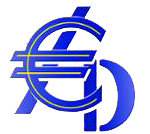 AD€ - Les Amis de l'Euro
AD€ - Les Amis de l'Euro

